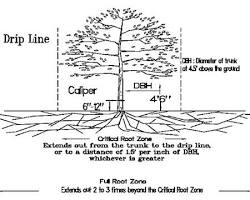🌳 The Arborist’s Blueprint: What the Experts Know That Saves Your Jacksonville Trees
- paulceki1205
- 13 hours ago
- 4 min read
The Living Machine: Understanding Tree Biology (11% of the ISA Exam)
The first principle of professional tree care is knowing that a tree is not just wood; it's a complex, living machine. You can't fix a tree until you know how it works.
First Principle: Photosynthesis is not just about leaves. It's about energy. The leaves produce the fuel (sugars), and the rest of the tree (roots, trunk) stores that fuel. If a tree is stressed (by drought, heat, or improper pruning), it's not just sick—it’s starving because it can't create or store enough energy.
Actionable Takeaway for Homeowners: Never hire someone who removes too much of the canopy ("lion-tailing"). You are literally removing the tree’s energy factory, starving it and making it highly vulnerable to pests and disease.
CODIT (Compartmentalization of Decay in Trees): This is the core principle of a tree's immune system. When a tree is wounded (by a storm or a saw), it does not heal like a human; it seals off the injury by building a new wall of wood. This is why proper pruning cuts are essential—they give the tree the best chance to form a strong, defensive wall against decay.
2. The Foundation: Soil & Root System Management (7% + 9% of the ISA Exam)
In the sandy soil of Jacksonville, the ground beneath the tree is the most neglected part of its health.
First Principle: Roots are not a mirror image of the canopy. Tree roots spread out incredibly wide and shallow (often only 12-18 inches deep), extending two to three times the width of the dripline. This area, known as the Critical Root Zone (CRZ), is where water and nutrient uptake happens.
Local Application (The Sandy Soil Challenge): Our North Florida soil lacks structure and organic matter. This is why proper mulching is non-negotiable. Mulch mimics the forest floor, retains moisture, regulates temperature, and breaks down to create the rich, organic, air-filled soil structure that roots need to thrive.
The Silent Killer: Compaction: When heavy equipment, cars, or even repetitive foot traffic compress the soil in the CRZ, it squeezes the vital air pockets. Roots suffocate and die. This is the number one cause of decline in urban trees that otherwise seem healthy.
3. Structural Integrity: Pruning for a Lifetime (14% of the ISA Exam)
Pruning is not cosmetic; it is structural engineering. The ISA standards dictate that every cut must promote long-term stability.
First Principle: Pruning is always about transferring energy and directing growth. When a proper thinning cut is made, the energy that would have gone to that branch is redirected to the rest of the tree, usually strengthening existing, better-placed branches.
The Power of the Collar and Branch Bark Ridge: The branch collar and branch bark ridge are the natural defense zone of the tree—the internal tissue that is ready to form that CODIT wall. A professional arborist makes a cut just outside this zone (a proper three-cut method) to ensure the tree can successfully seal the wound. Cuts that are too close (flush cuts) or cuts that leave a stub invite fatal decay.
Actionable Takeaway for Homeowners: If a company talks about "topping" a tree, they are practicing outdated, harmful techniques that violate all industry standards (ANSI A300 and ISA Best Management Practices). Topping is not pruning; it's destruction that leads to weak, hazardous re-growth.
4. Hazard Recognition: Tree Risk Assessment (11% of the ISA Exam)
A key part of being an arborist is moving from "tree care" to "risk management." Our primary goal is to protect your property and family.
First Principle: All trees have risk, but professional assessment can quantify and mitigate it. We use a systematic process to evaluate risk based on three factors:
Failure Potential: Is the tree likely to fail? (Looking for signs like internal decay, cracks, or fungal conks).
Size of the Part: How big is the limb or part that could fail? (The bigger the part, the higher the impact).
Target: What is underneath the tree? (A shed, a house, a driveway, or a person).
The Critical Defects We Look For in Jacksonville:
Codominant Stems (V-Crotches): Two main leaders growing up with a weak V-shape attachment. These frequently split, often over homes.
Ganoderma Fungus: A bracket fungus common on the roots of Florida Live Oaks, indicating root decay and high failure risk.
Actionable Takeaway for Homeowners: Never wait until after a hurricane to call us. We spot the defects that storms exploit. A professional Tree Risk Assessment is a proactive insurance policy against disaster.
5. The Urban Environment: Protection from Humans (9% of the ISA Exam)
The final principle recognizes that the urban landscape is the single biggest threat to tree health.
First Principle: The tree is an ecosystem that must be planned for. When a home renovation, deck build, or pool installation is underway, the life of the tree is instantly threatened by Grade Changes (adding or removing soil around the trunk) and Heavy Equipment Traffic.
Our Role in Construction Protection: A professional arborist doesn't just cut limbs; we advocate for the tree during site development. We mandate the establishment of a Tree Protection Zone (TPZ)—a physical barrier (like a fence) placed at or outside the Critical Root Zone—to prevent any activity that could damage the roots or compact the soil. Protecting the tree during construction is far cheaper than removing it after a slow, avoidable decline.
Ready to apply the Science of Arboriculture to Your Landscape?
Hiring a professional isn't just about getting a good deal on labor; it's about investing in scientifically-backed knowledge that ensures the long-term health, beauty, and safety of your North Florida trees.
Call Duval Tree & Mulch today to schedule a comprehensive property assessment—the first step in creating a long-term, healthy landscape plan.









Comments